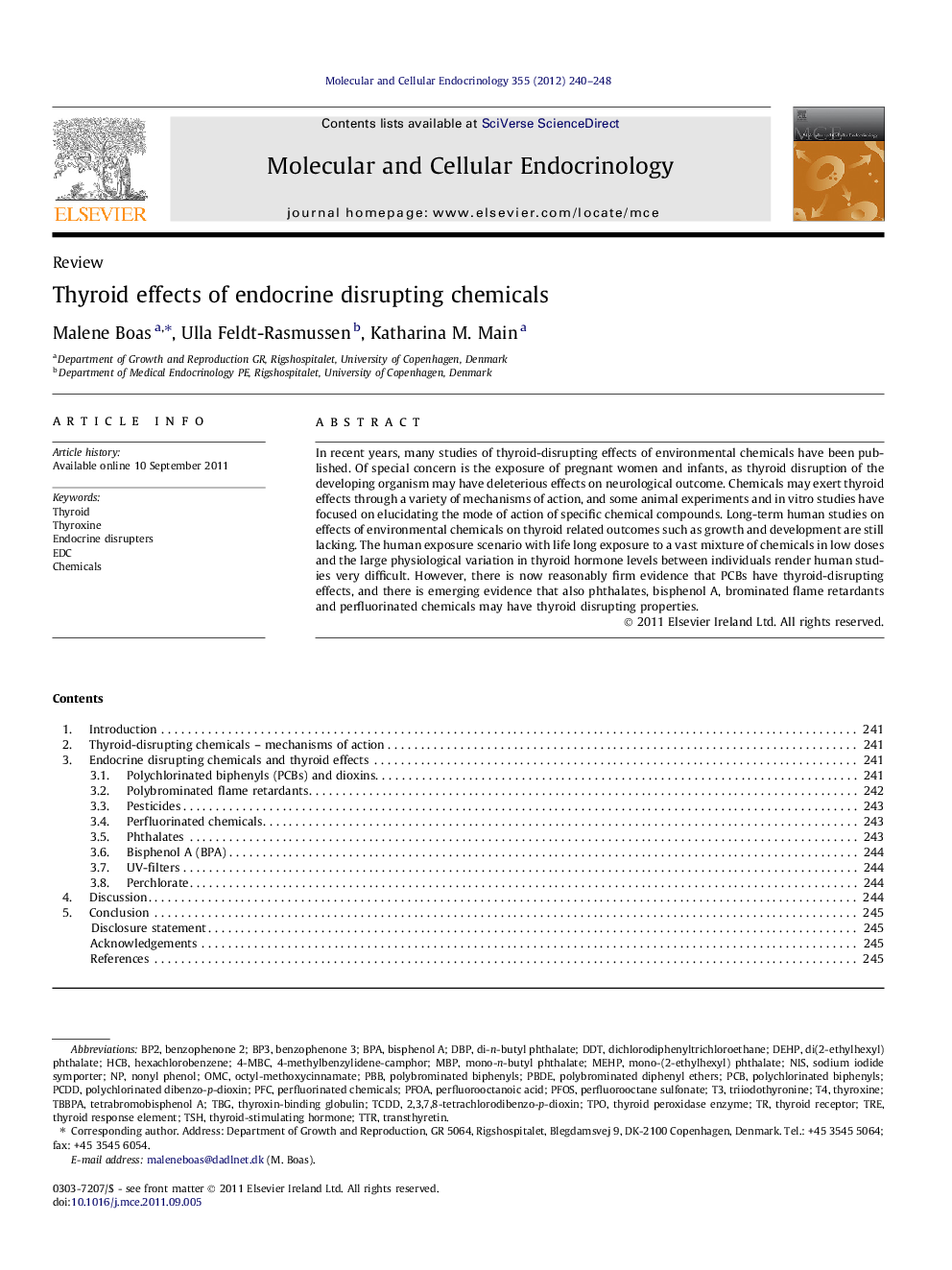| Article ID | Journal | Published Year | Pages | File Type |
|---|---|---|---|---|
| 10956277 | Molecular and Cellular Endocrinology | 2012 | 9 Pages |
Abstract
⺠Humans are exposed to a large number of suspected thyroid disrupting chemicals. ⺠Exposure to PCBs and perchlorate has negative effects on thyroid function. ⺠BPA, UV-filters and phthalates are also suspected to be thyroid disrupting chemicals. ⺠Long term studies on thyroid effects in humans are currently lacking.
Keywords
benzophenone 3TTRTPOTBBPAPCDDdi-n-butyl phthalateOMCTSHMEHPmono-n-butyl phthalateDEHPBP3TCDDdichlorodiphenyltrichloroethaneHCBPBDEPCBBPAEDCPFCtransthyretinBP2tetrabromobisphenol AThyroid response elementTBGPFOAPFOSNonyl phenolDBPMBP2,3,7,8-Tetrachlorodibenzo-p-dioxin4-MBCmono-(2-ethylhexyl) phthalateNiSendocrine disruptersHexachlorobenzeneBisphenol Apolybrominated biphenylsPolychlorinated biphenylsTriiodothyronineThyroidthyroxinedi(2-ethylhexyl) phthalatepolychlorinated dibenzo-p-dioxinPolybrominated diphenyl ethersDDTPBBsodium iodide symporterTREPerfluorooctane sulfonateChemicalsPerfluorinated chemicalsThyroid-stimulating hormonePerfluorooctanoic acidThyroid receptor
Related Topics
Life Sciences
Biochemistry, Genetics and Molecular Biology
Cell Biology
Authors
Malene Boas, Ulla Feldt-Rasmussen, Katharina M. Main,
